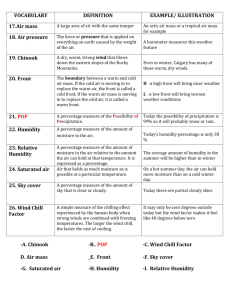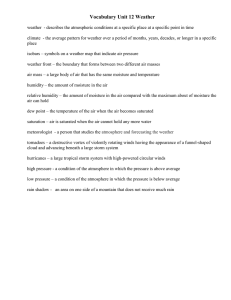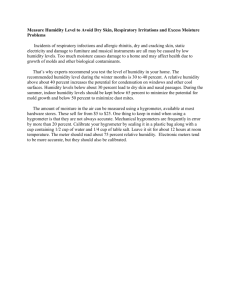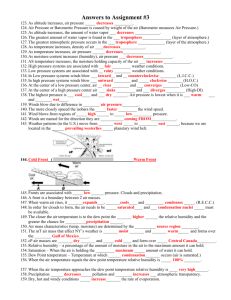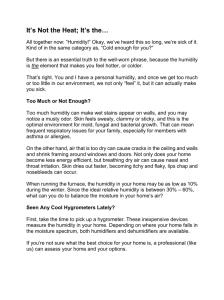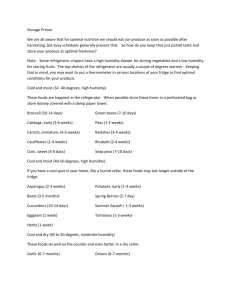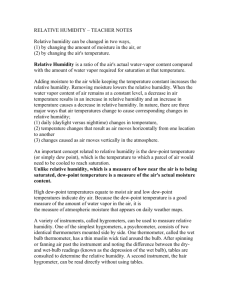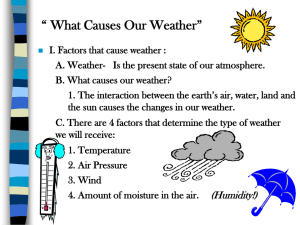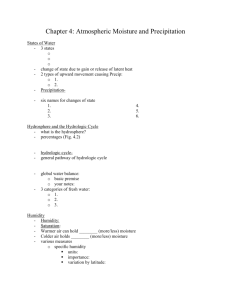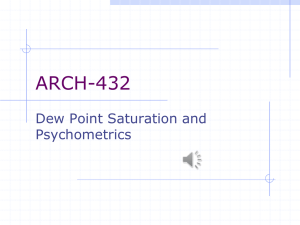Radiation
advertisement
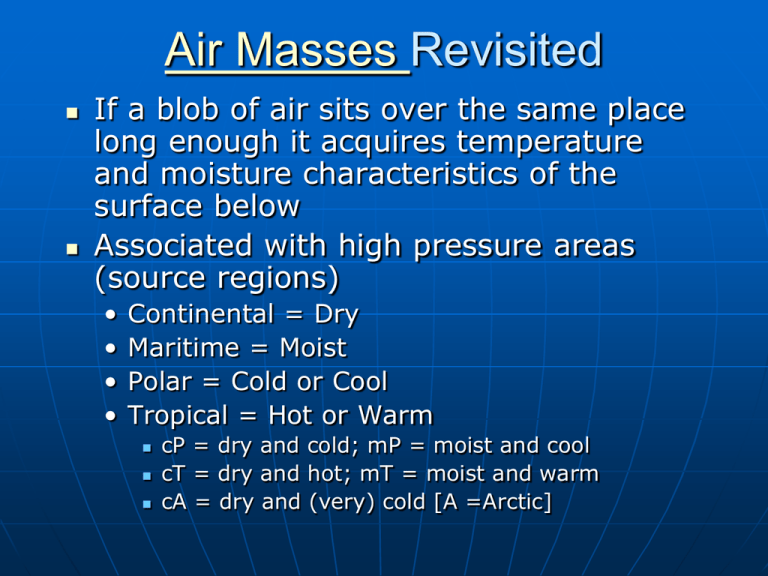
Air Masses Revisited If a blob of air sits over the same place long enough it acquires temperature and moisture characteristics of the surface below Associated with high pressure areas (source regions) • • • • Continental = Dry Maritime = Moist Polar = Cold or Cool Tropical = Hot or Warm cP = dry and cold; mP = moist and cool cT = dry and hot; mT = moist and warm cA = dry and (very) cold [A =Arctic] Front = Boundary between Two Air Masses Axis of lower (air, barometric) pressure Clouds and precipitation in vicinity Large temperature, moisture gradients Convergent surface winds (winds a few feet above the earth’s surface, generally measured about 30 feet, or 10 meters, above the surface) Moisture: The Hydrologic Cycle The journey water takes from the earth’s surface and beneath to the atmosphere and back again Closed system Water is Unique • All 3 phases exist naturally in normal atmospheric temperature ranges • All 3 phases can and do exist at the same temperature Phase Changes of Water Evaporation: liquid to gas • Requires a relatively large amount of energy Condensation: gas to liquid • Releases a relatively large amount of energy Law of Conservation of Energy Melting/Freezing: require/release somewhat smaller amounts of energy Sublimation/Deposition: minor players Humidity Amount of moisture in the air Dewpoint • The temp. at which dew forms; the temp. to which the air must be cooled for net condensation to begin • An absolute measure of humidity • Comfort levels, precipitation forecasting • Air is saturated when temperature = dewpoint Humidity (continued) Relative humidity: (VP/SVP)*100% • A relative measure of humidity, dependent upon moisture and temperature • Typical range from 0% (bone dry air, no moisture) to 100% for saturated air (T = Td) Saturated NOT equal to “liquid” air! How to Relate RH, Td (Approximate) The larger the difference between T and Td the lower the RH For every 20 degree F difference between temperature and dewpoint, the relative humidity is halved • T >= Td in general • So, if T = Td, RH = 100% (saturation) • If T = 80F, Td = 60F; RH = 50% • If T = 80F, Td = 40F; RH = ? • If T = 95F, Td = 35F; RH = ? • Typical Daily Cycle of T, Td, RH Key Figures 4.11, 4.12, 4.30, 4.31

